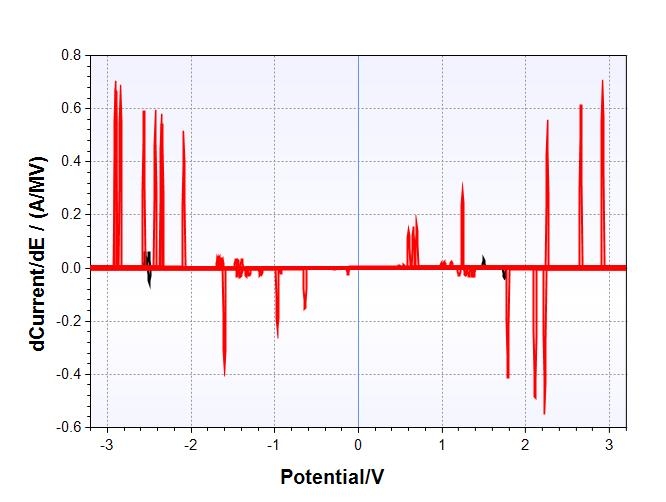The Demise of Rainwater

The Demise of Rainwater
by
Clifford E Carnicom
A Paper to be Developed During
the Summer of 2016
(Last Edit Jun 20 2016)
| “The single most important chemical species in clouds and precipitation is the .. pH value.”Paul Crutzen, Nobel Prize Winner in Chemistry, 1995 Atmosphere, Climate and Change, Thomas Graedel & Paul J. Crutzen Scientific American Library, 1997 |
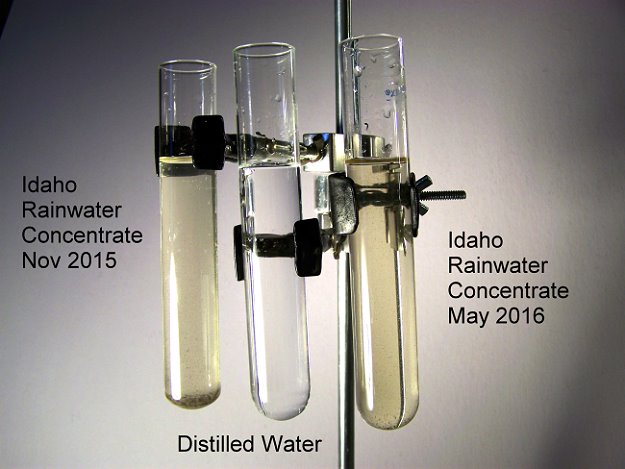 |
| Photo : Carnicom Institute |
An analysis of five rainfall samples collected over a period of six months and spanning three states in the western United States has been completed. There are five conclusions that are forthcoming:
Let us now proceed with some of the details. We can begin with the pH, i.e., the acid or alkaline nature of rainfall. Biochemical reactions take place (or, for that matter, do not take place..) at a specific temperature and pH. If the system or environment for that reaction is disturbed with respect to the acidity and temperature, then the reaction itself is interfered with. If the conditions depart far enough from what is required, the reaction may simply not even take place at all. Such is the risk of interference to the acid-base nature of rainfall, upon which all life on this planet depends.
To be continued.
|
||||||||||||||||||||||||||||||||||||
PART I: SUMMARY VIEW |
||||||||||||||||||||||||||||||||||||
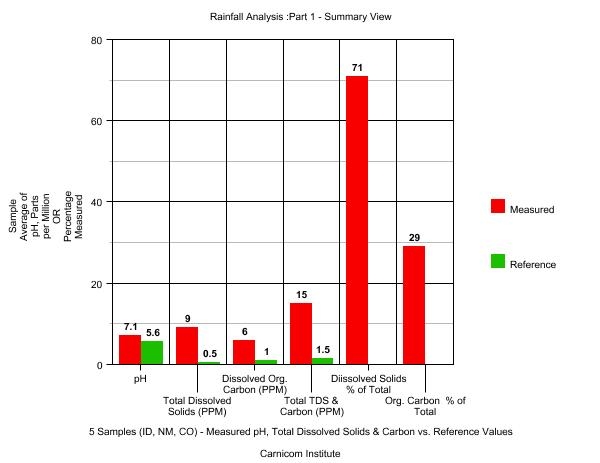 |
||||||||||||||||||||||||||||||||||||
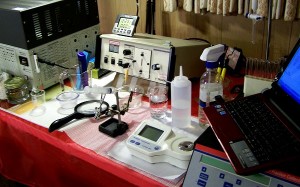 UV Detector & Lab Equipment Used for Summary View Data |
||||||||||||||||||||||||||||||||||||
PART II: TRACE METAL ANALYSIS
|
||||||||||||||||||||||||||||||||||||
| The following metallic elements have been determined to exist, or to be strong candidates to exist, within a series of five rainwater samples that have been tested for trace metals. The samples span three states across the country and six months of time. The method applied is that of Differential Normal Pulse Voltammetry. The level of detection for the method is on the order of parts per million (PPM). This list considerably extends the scope of consideration for the future investigation and detection of metallic elements within rainwater. The findings in the upper portion of the table are highly consistent with those under reporting by various laboratories across the country; those in the lower half serve to prompt further investigations into additional elements that are highly related in their properties within the periodic table. An examination of the physical properties of these elements, in detail, will likely provide additional insight into the applications of use for these same elements. It can be noticed that the majority of elements within the list act as reducing agents. | ||||||||||||||||||||||||||||||||||||
|
||||||||||||||||||||||||||||||||||||
Additional Inorganic Analyses:
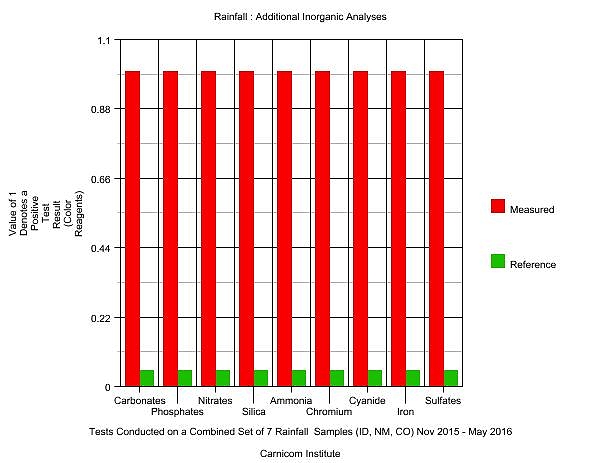
| Qualitative (Color Reagents) Test Results for Combined Rainfall Sample A Value of 1 Indicates a Positive Test Result Concentration of RainwaterSample ~15x (No information regarding concentration or concentration ranking is provided here.) (Chromium, Cyanide & Iron appear to be at minimal trace levels) |
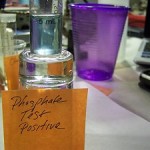 |
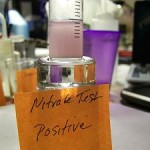 |
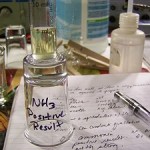 |
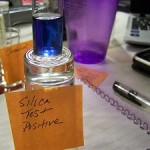 |
| Qualitative Positive Test Examples: Phosphates, Nitrates, Ammonia, Silica |
|
PART III: BOILING POINT TEMPERATURE ANALYSIS:
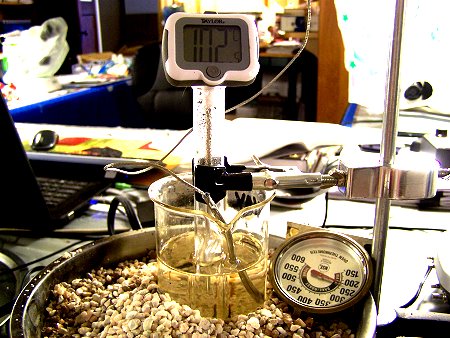 |
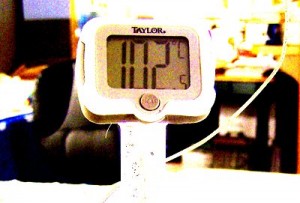 |
| Tests to Determine the Boiling Point for the Concentrate Rainfall Sample Using an Oil Bath (Contamination is Evident) |
PART IV: INFRARED ANALYSIS:
(ORGANIC)
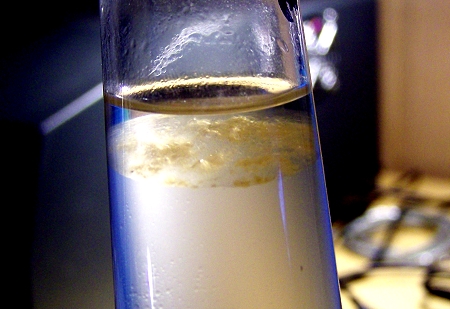 |
| An Organic Extraction Process (Results subsequently to be examined by Infrared Spectroscopy) |
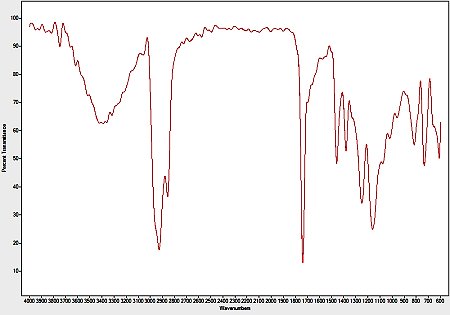 |
| Infrared Spectrum of Rainfall Organic Extraction : Water Soluble & Insoluble Components (see previous photo) (solvent influences removed) |
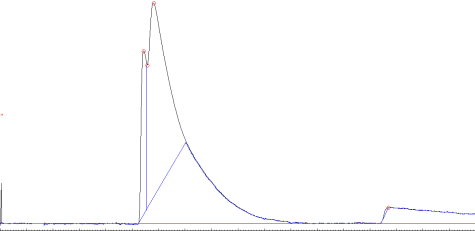 |
| Gas Chromatography (TCD) Applied to Organic Extracts (tailing from varying polarities) |
PART V: BIOLOGICALS
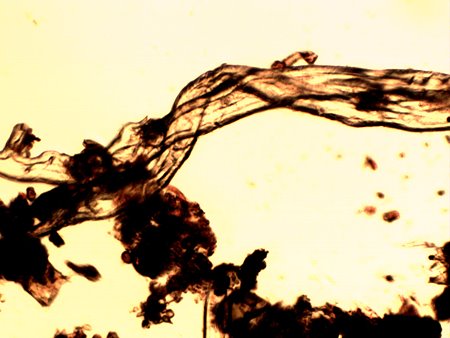 |
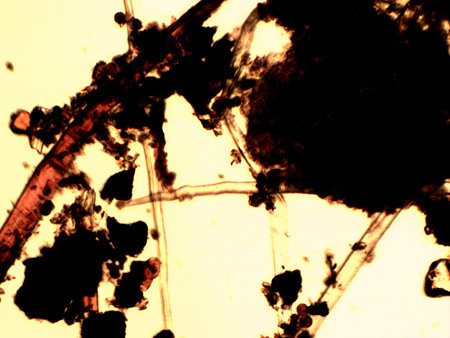 |
| Biologicals Extracted from Rainfall Concentrate Samples ~2000x |
| Additional Note: I wish to thank Mr. John Whyte for his dedication and effort to organize and produce an environmental conference in Los Angeles, California during the summer of 2012. Mr. Whyte, in support of the speakers at the conference, provided the means for some of the environmental test equipment used in this report. I also wish to thank the general public for their assistance during this last year in the acquisition of important scientific instrumentation by Carnicom Institute. This report is made possible only by that generosityClifford E Carnicom Jun 18, 2016To be continued. |
Source: http://carnicominstitute.org/wp/the-demise-of-rainwater/



